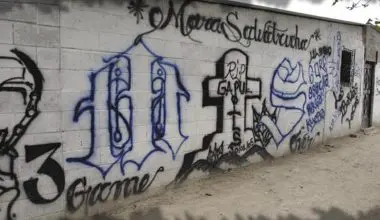THIS column is not about guns, gear, or shooting. It’s not about the gunfight. Rather it’s about the periphery of the gunfight.
Sound boring? It shouldn’t. Ask any cop or professional gun carrier which they’ve done more of: Operate with their weapon drawn or operate while firing their weapon. Almost every single one will say they have had to operate with their weapon drawn and perhaps covering a suspect or danger area many more times than they have actually had to fire their weapon.
A couple years back, I was at a great IALEFI (International Association of Law Enforcement Firearms Instructors) conference. As we reviewed films of actual and training shooting scenarios, we noticed a recurring phenomenon. Immediately following the gunfight, many were fumbling, bumbling and making flawed, but fortunately not fatal decisions.
As with any group of honest teachers, we took a hard look at ourselves and found the answer. We, the firearms instructors, were the problem. We were training our guys and gals to draw, announce and issue verbal warnings just fine. But we were ending our scenarios right after the shoot. That’s not how real life works.
Anyone who has been in or at a shooting will tell you that the post-shooting situation can be even more grueling than the actual shoot. This brings me to off-hand access and weakhand tactics.
While you may normally fire your weapon with two hands, much of the time you will only be able to have one hand on your weapon. Your support, or off, hand will be otherwise engaged by your radio, cell phone, flashlight, or whatever your job may require, or even a combination of the above.
The fact that those defending themselves with firearms prefer handguns to shotguns because they can have one hand free to call for help was even acknowledged by Supreme Court Justice Anthony Scalia in his now famous decision that overturned the DC handgun ban.
Post- or non-shoot scenarios should begin and end with off-hand access. That means if you need to call for backup with your radio or cell, they need to be on the opposite side of your body from your weapon.
Don’t think this is important? Clear, check, and doublecheck your weapon. Try covering down in a safe direction. Next, reach over with your support hand and draw your cell phone from the same side your weapon is holstered on. Not so easy, is it? Now think about having to do it under the physiological and psychological stresses of a gunfight.

If you have to shoot or hold someone at gunpoint, what’s the next thing you’ll have to do? Call somebody. Conclusion? You always need to put your cell, knife and backup on your off-weapon side.
I know what comes next. Some readers will write that they will simply switch hands. After all, don’t many law enforcement courses of fire and qualification actually teach and require switching hands?
Yes, you are right. Any responsible gunfighting school teaches switching hands. But real life is not sound bites. Switching gun hands is taught because the natural phenomenon of tunnel vision, which often occurs in gunfights, results in the shooter’s vision focusing and enlarging on the threat, that is the gun barrel of the enemy. Thus shots tend to cluster around the threat of the gun barrel, which means they often strike the gun hand or gun, requiring the shooter to switch from his wounded hand to his good hand to continue the fight. This is why switching firing hands is taught.

“So there,” says the armchair gunman, “I’ll just switch hands.” Actually, you may not be able to do so. Another phenomenon often observed in gunfights is adrenal lock. During a life and death crisis, your hand will not release what is in it, especially if it is the weapon you believe will save your life. But it doesn’t have to be a life-saving tool. It could be just a little plastic card.
The cruiser camera of a Texas constable who stopped a carload of drug smugglers tragically recorded the most famous example of this phenomenon, as the lone officer was overwhelmed and murdered by the dopers. Through it all, the constable was never able to draw his sidearm because his hand was locked on the smuggler’s driver’s license. The last thing the doper scum did after he murdered the officer with his own weapon was to rip his driver’s license from the officer’s still-warm hand.
That brings us back to off-hand access. What if you have to execute a PIT or are involved in a road-rage car accident and need to draw your weapon while still controlling the vehicle? How about cutting your way free of a stuck seat belt, rappel line, or fast rope while still controlling your M4?
Next time you’re in your vehicle, try reaching across to unlock the seat belt with your weak hand. Difficult at best, isn’t it? Try doing it after a crash with weapon drawn. Make it easier by placing your folding blade off side as well, so you can slice your way out of the seat belt.
All these scenarios are ones I have either experienced firsthand or been told directly by cops or soldiers. Add to this the fact that every night, thousands of officers begin interviews on countless car stops with flashlights in their weak hands, and the reality is clear: weak-hand tactics are vital to winning the fight.

